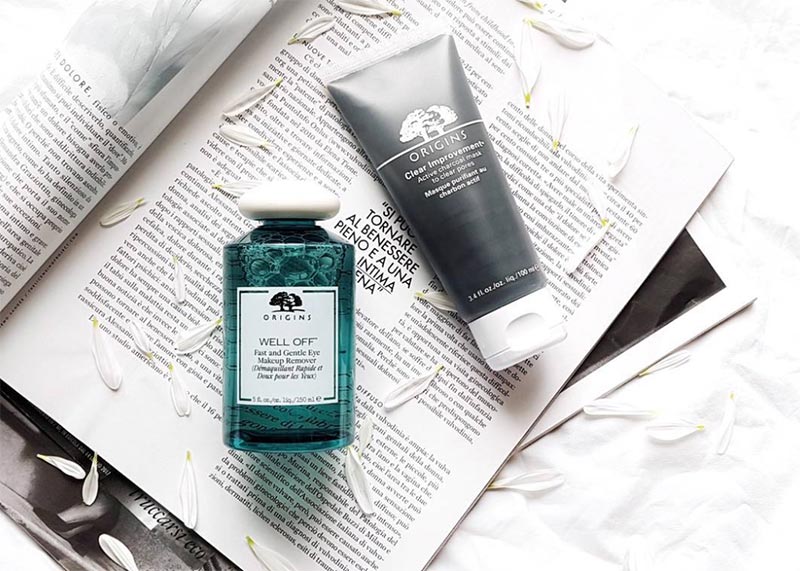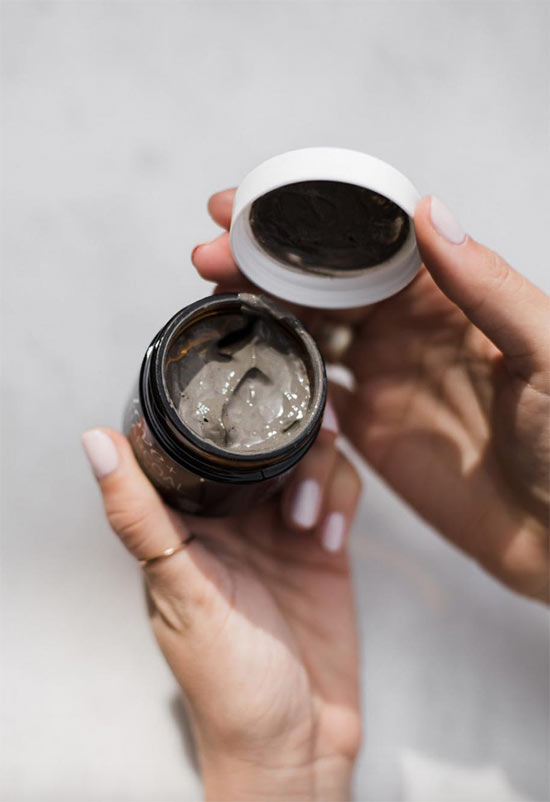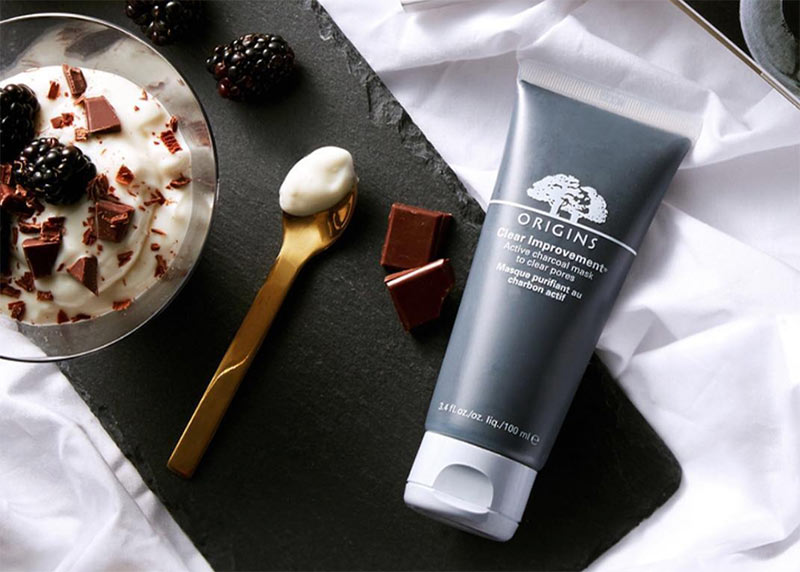Charcoal face masks are like a vacuum cleaner for the skin. Does that sound intense? Well, it can be, but charcoal face masks can also hold other benefits to the skin.
Charcoal powder, specifically charcoal that has been treated to increase its absorbency, has been used in the medical field for years as a treatment for poisoning. The poison binds to the charcoal before it can be digested, which helps prevent the ill effects of the poison. Because of this, many people believe charcoal can also detoxify the body during other times.
While this is not quite true, charcoal’s absorbency still makes it a great addition to face masks. In skin care, the charcoal we find is almost always activated, and it normally comes from bamboo!
In this article, we explain exactly what the charcoal skin benefits are, so you can decide if it’s right for you, along with some warnings. We’ll explain the best way to incorporate charcoal face masks into your routine, and we even included a recipe, so you can make your own charcoal mask at home!
In this article:
- Charcoal Face Mask Benefits
- How to Use a Charcoal Face Mask?
- Charcoal Face Mask Warnings
- How to Make a DIY Charcoal Mask at Home?
Charcoal Face Mask Benefits
While many sources say that charcoal face masks can detoxify the skin, I want to nip that idea in the bud. The word “detoxify” implies that there are toxins in the skin that can be removed with a topical product, which simply isn’t how topical skin care works.
Topical products like charcoal face masks can certainly remove all kinds of debris that the skin collects from the environment and cause acne, but those impurities are not “toxins” so the word detoxify doesn’t make sense. That’s why I don’t use it when I write about skin care.
With all this being said, here are the actual benefits of using charcoal masks!
Deep Cleansing
Charcoal is deeply absorbent, and is able to pull all kind of nasties away from the skin. When applied as a mask it goes much deeper than a cleanser can, to help clear the pores of things like dirt, sweat, oils, makeup, and general bits of pollution that accumulate on the skin throughout the day.
Mattifying
Charcoal face masks often are also made with clays like bentonite or kaolin. On its own charcoal is able to absorb excess oils, but when paired with clays the mixture can do an even better job of eliminating sebum and leaving the skin feeling mattified. We do need a bit of oil on our skin, so this mattifying effect is only ideal for those with oily skin and even then only for once or twice a week use.

Unclogging Blackheads
If one of your skin concerns is blackheads or sebaceous filaments, charcoal face masks can seriously help. That deep cleansing effect helps to clear out the pores, perhaps not immediately, but certainly after regular use. The effect is double if you follow a charcoal mask with a face massage using oil.
Minimizing the Pores
Since charcoal face masks can deeply clean out the pores, they also end up minimizing their appearance. As our pores get clogged with oils and dead skin, they tend to get stretched out. Regular masking with charcoal masks leaves the pores clear and keeps them looking tight.
Preventing Breakouts
One aspect that causes breakouts is overproduction of oil in the skin, while another is clogged pores, which become infected with bacteria and turn into pimples.
Because charcoal masks help to eliminate excess oil and to clarify the pores, they can help prevent breakouts. Many charcoal face masks also include other ingredients that help fight acne, like salicylic acid or tea tree oil.
On their own these masks are not the ultimate solution to acne, but they can certainly help as part of a full skincare routine.
How to Use a Charcoal Face Mask?

This is how you apply a charcoal face mask:
- Cleanse
Begin with cleansing your skin. As always, I recommend finding a gentle cleanser that won’t throw your skin off balance. CosRX Low PH Good Morning Gel Cleanser and Philosophy Purity Made Simple Cleanser stand out as two excellent choices. When you’re done massaging your skin with cleanser, make sure it is thoroughly removed by either rinsing the face multiple times, or by using a gentle face cloth or cleansing wipes to remove it.
- Exfoliate
It is optional to also exfoliate your skin. This will remove all the excess dead skin, and allow your charcoal face masks to penetrate more deeply and give a better cleanse. If you are specifically dealing with blackheads or sebaceous filaments, it is best to use a chemical exfoliant with salicylic acid. For general exfoliation, a scrub will suffice.
- Apply the Mask
You can now apply your charcoal face masks. Squeeze out an approximately quarter-sized amount to apply to your face since charcoal face masks usually require a slightly thicker layer.
- Use a Face Brush
Charcoal face masks can be somewhat thick to apply, so it is best to apply them with a face brush. Apply the charcoal mask to your skin in upward strokes, in order to lift up the “peach fuzz” hairs on the face and to get the mask as close to your skin as possible.
- Multi-Mask
If you have combination skin that is only oily in certain areas, you can multi-mask by applying your charcoal mask to the oily or clogged areas (usually the T-zone), applying a more nourishing mask to other parts of the face.
- Avoid the Eye Area
Avoid applying charcoal face masks around the eye area, as they can severely dry out the sensitive skin there.
- Wait
Let the charcoal face mask sit on your skin for the amount of time recommended on the package. This will normally be sometime between 5-15 minutes. You don’t have to lie down or be idle during this time! You can move around and do things, or relax with a book.
- When You Have Dry Skin…
Most, though not all, charcoal face masks will dry down after 5-10 minutes. Your face will feel tight, and the mask will likely change color and feel dry to the touch. If your skin is on the drier or dehydrated side of things, make sure to remove the mask before it completely dries down.
- Remove
When it’s time, remove your charcoal mask. Some charcoal face masks can by peeled off, although most will require rinsing off with water. Dampen your skin thoroughly to rehydrate the mask so it can be more easily removed. Rinse away as much of it as you can with just water. To ensure the mask is truly completely removed, finish off by wiping your face in upward motions with a damp cloth or face wipe.
- Use a Hydrating Mask
As an optional choice, you can now take the chance to rehydrate the skin with a second mask that is more hydrating or skin-soothing. Apply it as instructed, and remove with water and a wipe or cloth.
- Give Yourself a Face Massage
You can also give your skin a pore-unclogging face massage. Use a non-comedogenic oil like mineral oil or cold-pressed sunflower oil. Massage your skin with it in circular, upward and outward motions, focusing especially on the areas where you have more congestion. You might notice sebaceous filaments coming out in what is sometimes referred to as “grits”. Do not massage for longer than 30 seconds, and remove the oil with a warm, damp cloth.
- Apply a Toner
Charcoal face masks often sit at a neutral pH, so it is good to bring the skin to acidity with a pH-adjusting toner.
- Moisturize
Finish off your skincare routine, making sure to focus on hydrating the skin since charcoal face masks can be drying. Use your usual skincare actives, a hydrating essence or serum, spot treatments if you are also treating acne, and a moisturizer. If it is daytime, make sure to also apply a product with adequate sun protection.
Charcoal Face Mask Warnings
The first warning/ advice I have about charcoal face masks actually applies to all skincare products, but I think it’s always important to mention. Before slathering your new mask all over your face, please make sure to do a patch test.
Try the mask out on a small piece of skin, just to ensure that your skin won’t have any reaction to it. Charcoal by itself is quite powerful, but in masks it is often combined with even stronger active ingredients, so it is important that you be careful, as rashes, redness, and irritation can occur as a reaction to charcoal face masks.
Charcoal masks are not for everyone. In fact, I would only recommend charcoal face masks as a regular treatment for those who have oily skin. For all other skin types, including combination skin, charcoal face masks can be very drying and even irritating.
We need some oil on the surface of the skin, since it is protective and it makes our skin act as a stronger barrier. Sometimes a bit of charcoal is added to a mostly moisturizing formula, in which case it can work for those with normal or even dry skin.
Those with acne-prone skin will not necessarily benefit from regularly using charcoal face masks, since acne is caused by more factors than just oiliness.

If the reason you break out is because your skin’s barrier is compromised and more susceptible to bacteria, then clay or charcoal masks won’t help because they won’t treat the underlying cause of your breakouts. They could even exacerbate the situation by further drying out your skin.
If your skin is clogged or oily, then you can definitely opt for charcoal face masks, but make sure to moisturize your skin well afterwards.
How to Make a DIY Charcoal Mask at Home?
DIY face masks are great, because you don’t have to worry about things like preservatives! You just mix your one-time batch of a charcoal face mask, use it, and enjoy.
This recipe is for one-time use. You can double or triple it if you’re making charcoal face masks for a few different people – spa party, anyone? Just please don’t try to save the mask, since it is unpreserved and will go bad very quickly.
This recipe makes a charcoal mask that is great for those with oily skin. It contains some tea tree oil to help prevent acne breakouts as well as honey to lightly moisturize the skin. You can add a few drops of sunflower oil to it if you would like a more moisturizing mask.
- ¼ tsp of kaolin clay
- ¼ tsp of activated charcoal
- ¼ tsp of organic honey
- ¼ tsp of organic apple cider vinegar
- 1 drop of tea tree essential oil
Mix all of your ingredients in a ceramic or glass bowl, using a clean mask brush. Apply it to your skin following the instructions I outlined in the earlier section. Make sure to throw out any leftover mask, since it should only be used when fresh!
Photos via @paola_antonini, Instagram





